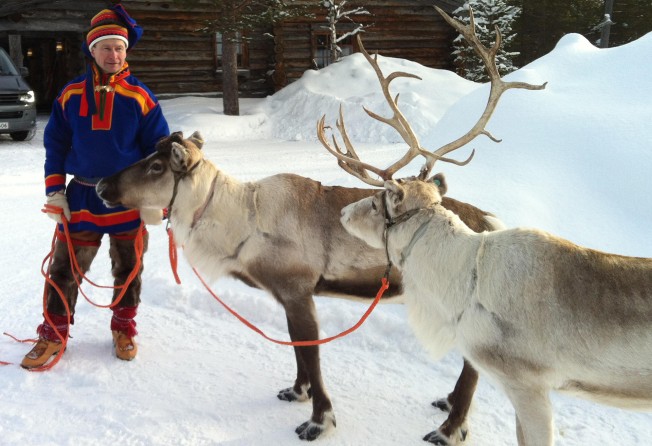Scientists unravel eye-colour changes that allow reindeer to cope in Arctic
Researchers discover an amazing ability that allows reindeer to adjust to Arctic light changes

Rudolph the fictional reindeer was famous for his red nose, but his true-life cousins have eyes that change colour with the seasons.
In the summer, the eyes of Arctic reindeer appear gold, and around Christmas they turn to a deep blue, biologists have discovered. It's not holiday magic, but rather an adaptation that helps these animals deal with the strange light conditions.
Above the Arctic Circle, Christmas falls in the midst of a 10-week period of perpetual twilight in which the sun never rises and the landscape is cast in bluish hues. But from mid-May to late July, the sun never sets.
Biologists at the University of Norway wondered how the reindeer managed the transition from near-total darkness to blinding light, when springtime sunlight reflects off unmelted snow.
They collected reindeer eyes from the Sami, indigenous herders who often slaughter the animals around the solstices. The eyes were collected in winter and summer and sent to Glen Jeffery, a neuroscientist who at University College London.
"That first time, they sent me 10 eyes from summer and 10 eyes from winter," Jeffery said. "When I opened them, I had the biggest shock I've ever had in science. The winter ones were clearly blue and the summer ones clearly gold. I wished I had someone sitting next to me to exclaim to."
Karl-Arne Stokkan and his colleagues in Norway discovered that the colour change occurred on a reflective surface behind the central retina known as the tapetum lucidum.
Humans don't have this structure, but many animals do. It helps nocturnal animals see at night by bouncing light back inside the eye, giving the light receptors in the retina a second chance to be stimulated.
Scientists had always assumed the colour was fixed.
"This is the first time that a change in colour in the tapetum has been shown in a mammal," Jeffery said.
In a study published in the Proceedings of the Royal Society B, Jeffrey and his colleagues in Norway explained that when a reindeer's tapetum was blue, 50 per cent less light was reflected out of the eye than when the tapetum was gold.
A reindeer with a blue tapetum sees less clearly than one with a gold tapetum, but its eyes are 1,000 times more sensitive to light.
"Clinically, the reindeer become glaucomic," Jeffery said.
The scientists determined that the colour of light reflected was likely to depend on fluid pressure in the eye.
In the winter, the reindeers' pupils dilate completely to let in light. That also causes a flap to descend over the back of the eye where fluid normally drains out. Since the fluid cannot escape, the pressure inside the eye increases. That, in turn, causes collagen fibres in the tapetum to squeeze together, which changes its colour from gold to blue.